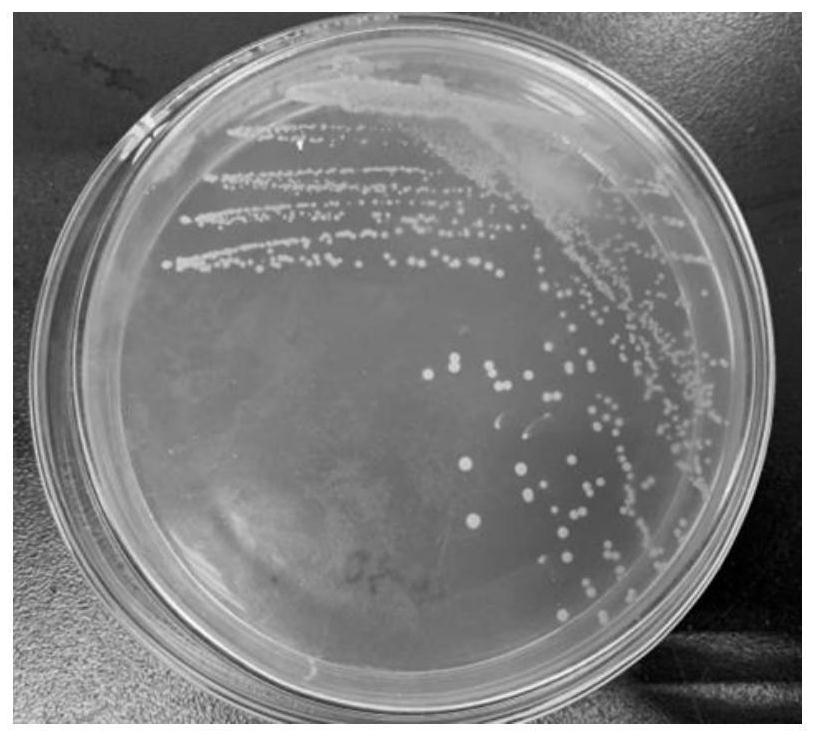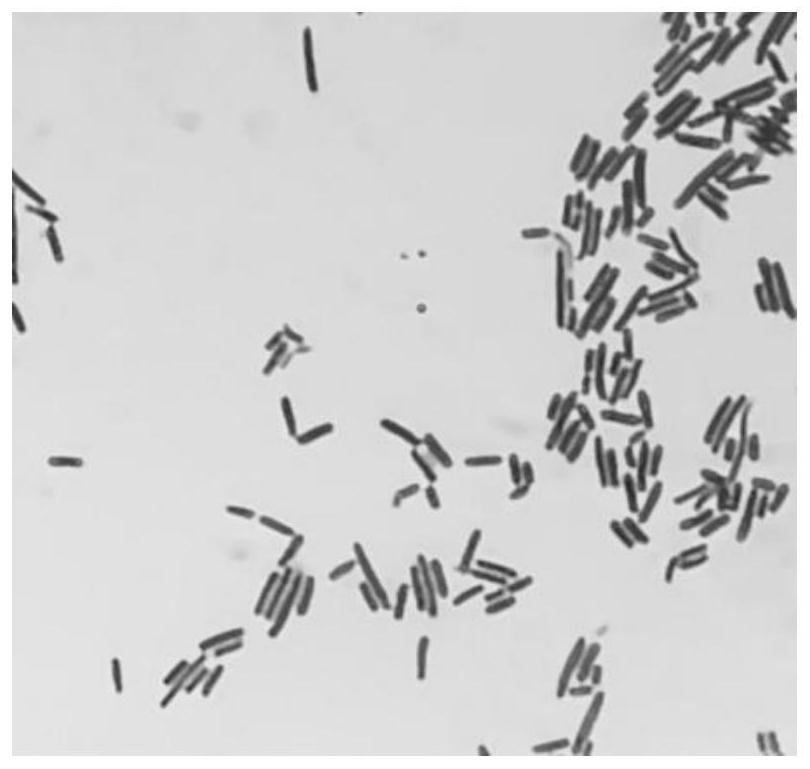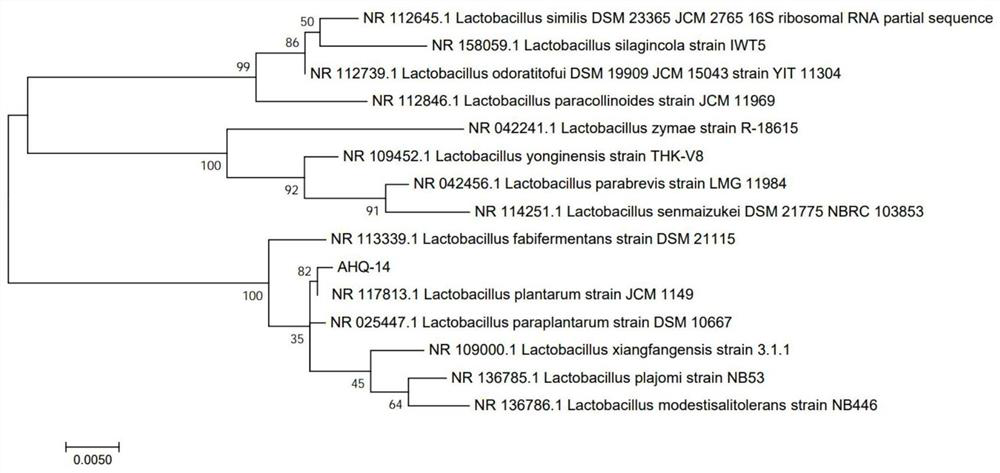A strain of Lactobacillus plantarum reducing the antigenicity of milk β-lactoglobulin and its application
A technology of Lactobacillus plantarum and lactoglobulin, applied in the field of Lactobacillus plantarum AHQ-14, to achieve the effect of high adhesion ability and high survival rate of intestinal cells
- Summary
- Abstract
- Description
- Claims
- Application Information
AI Technical Summary
Problems solved by technology
Method used
Image
Examples
Embodiment 1
[0021] Embodiment 1: Screening of Lactobacillus plantarum AHQ-14
[0022] 1. bacterial strain isolation method: prepare MRS medium: according to 20g / L glucose, 10g / L peptone, 5g / L yeast extract, 10g / L beef extract, 5g / L sodium acetate, 2g / L diamine hydrogen citrate, 2g / L Dipotassium Phosphate, 0.58g / L MgSO 4 ·7H 2 O, 0.25g / L MnSO 4 ·5H 2 O and 1mL / L Tween-80 were weighed raw materials, mixed uniformly, dissolved in deionized water, the obtained solution was sterilized at a temperature of 121 ° C for 15min to obtain the MRS medium; 15g / L agar powder was added to the medium , sterilized at a temperature of 121 °C for 15 min to obtain MRS agar medium.
[0023] Mix the collected Xinjiang traditional fermented yogurt samples with a vortex shaker, weigh 0.5g or 0.5ml of the sample into 4.5ml of sterile saline with a concentration of 0.85%, and dilute the sample ten-fold gradient (10 -4 , 10 -5 , 10 -6 ), then spread on MRS agar medium or M17 agar plate medium, cultured anaero...
Embodiment 2
[0025] Example 2: Morphological characteristics and bacterial species identification of Lactobacillus plantarum AHQ-14
[0026] 1. Colony morphological characteristics: Lactobacillus plantarum AHQ-14 of the present invention forms milky white colonies on MRS agar medium, opaque, round, neat edges, central bulge, about 1.3~1.6mm in diameter, see attached for details. figure 1 .
[0027] II. Bacterial morphology: Lactobacillus plantarum AHQ-14 of the present invention has the following morphological characteristics: the cells are long rod-shaped with blunt ends, 4.0-8.0 μm long and 0.9-1.1 μm wide, and are single or chain-shaped. For details, see attached figure 2 .
[0028] III. Molecular biological identification: using universal primers, the forward primer is 27f: 5′-AGAGTTTGATCCTGGCTCAG-3′; the reverse primer is 1492r: 5′-GGTTACCTTGTTACGACTT-3′, and the bacterial DNA is used as the amplification template for PCR amplification 16S rRNA gene region, the amplified product w...
Embodiment 3
[0030] Example 3: Bile salt hydrolase activity of Lactobacillus plantarum AHQ-14
[0031] The strains were supplemented with 0.2% (w / v) sodium thioglycolate, 0.3% (w / v) sodium taurodeoxycholate hydrate and 0.2% (w / v) CaCl 2 cultured on MRS agar plates. The sterilized MRS medium is added to the sterile petri dish, and a sterile filter paper sheet with a diameter of about 3-4 mm is evenly placed on the solidified medium. Adsorb 10 μL of activated bacterial solution, slowly add filter paper until the liquid no longer flows, and culture at 37 °C for 3 days under anaerobic conditions. The precipitation area around the colony shows the bile salt hydrolase activity of the strain.
[0032] MRS medium was used as a negative control and LGG was used as a positive control for qualitative determination of bile salt hydrolase activity. Figure 4 A large amount of deoxycholic acid precipitated and diffused into the medium around AHQ-14, which proved the existence of bile salt hydrolase a...
PUM
| Property | Measurement | Unit |
|---|---|---|
| diameter | aaaaa | aaaaa |
Abstract
Description
Claims
Application Information
 Login to View More
Login to View More - R&D
- Intellectual Property
- Life Sciences
- Materials
- Tech Scout
- Unparalleled Data Quality
- Higher Quality Content
- 60% Fewer Hallucinations
Browse by: Latest US Patents, China's latest patents, Technical Efficacy Thesaurus, Application Domain, Technology Topic, Popular Technical Reports.
© 2025 PatSnap. All rights reserved.Legal|Privacy policy|Modern Slavery Act Transparency Statement|Sitemap|About US| Contact US: help@patsnap.com



